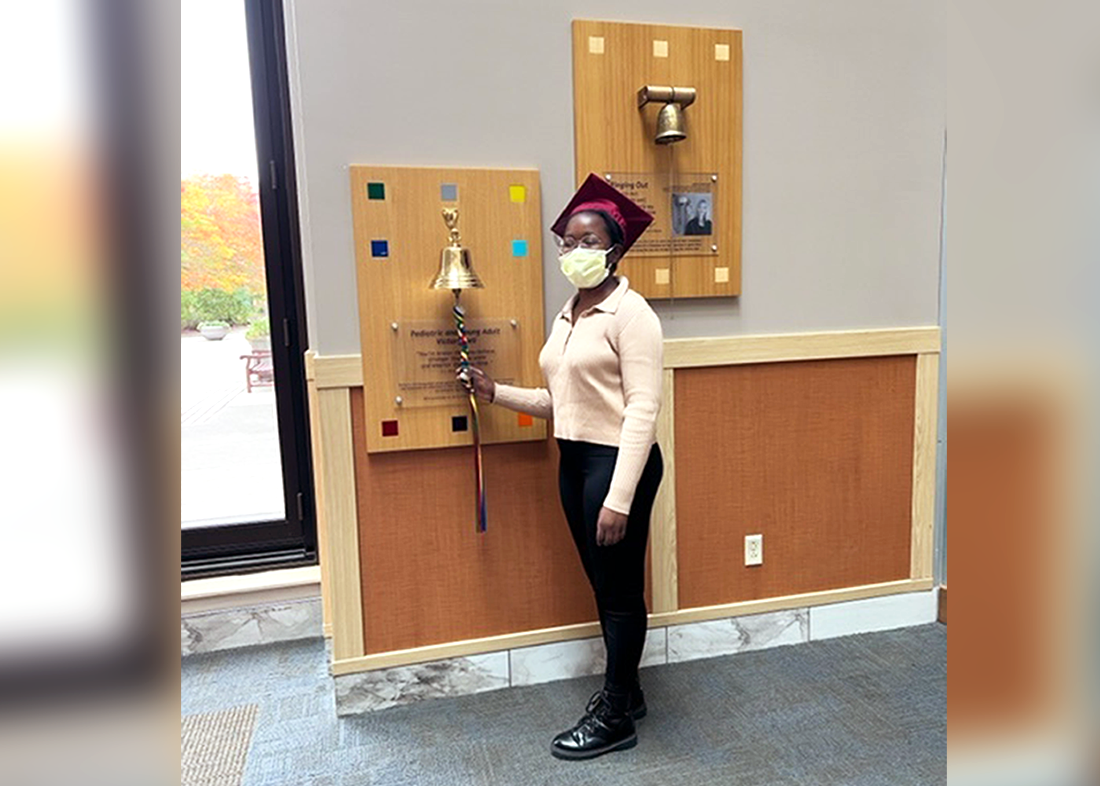Sickle cell disease is a blood disorder that affects the red blood cells.
Healthy red blood cells are round and flexible and move easily through blood vessels. They contain a protein called hemoglobin that allows them to carry oxygen throughout the body.
Sickle cell disease occurs when the hemoglobin protein is abnormal (called Hemoglobin S), making the red blood cells rigid, sticky and shaped like a banana or sickle. These sickle-shaped red blood cells can break apart more easily and get trapped in blood vessels, causing pain, organ damage, potentially stroke, and increases the risk for life-threatening infection.
In the United States, newborns are screened for sickle cell disease as part of the national newborn screening program.
Treatment for children with sickle cell disease
Treating sickle cell disease is complex and takes the specialized care of a pediatric hematologist. Children with sickle cell disease need regular blood tests to monitor for complications such as anemia. Most children from ages 2 to 16 should have a transcranial doppler ultrasound screening yearly to learn if they are at a higher risk for stroke. If the test comes back abnormal, regular blood transfusions can lower the chance of having a stroke.
Treatments generally fall into two categories: Supportive care and treatments directed at the disease — and patients often receive both types of care.
Supportive care for sickle cell disease
Supportive care uses medicines and other treatments to ease the symptoms of the disease, prevent complications and relieve pain. In children with sickle cell disease, the spleen doesn’t work the right way making it easier to get severe infections. Supportive care includes:
- Penicillin taken twice daily to lower the chance of infection caused by the pneumococcus bacteria.
- Vaccinations. Children with sickle cell disease should receive all recommended childhood vaccines, plus additional vaccinations to prevent pneumococcus, meningococcus, influenza and COVID-19.
- Pain management. Pain may range from mild to severe. Initial management of pain includes giving ibuprofen, plus rest, staying well hydrated, using heat on areas of pain, massage if tolerated, and techniques to help you relax. Sometimes stronger medication is used at home, but more severe pain may require emergency care or even hospitalization.
- Nutrition. A healthy diet rich in vegetables and fruits, and low in processed foods, can help those with sickle cell disease feel better. Additionally, supplementation with certain vitamins, like folic acid, is necessary.
- Avoiding triggers. Painful episodes may occur because of certain situations or “triggers”, like being dehydrated, exposure to cold or wind, infections, injury, or stress, so these should be avoided if at all possible.
Treatment for sickle cell disease
Several treatments work against the disease itself, reducing and preventing complications, and others — such as stem cell transplant and gene therapy — offer a cure. Treatments include:
Medications
- Hydroxyurea is a daily oral medicine that raises the amount of hemoglobin F, which is shown to reduce or prevent certain complications for most patients with sickle cell disease.
- Voxelotor (Oxbryta) is a daily oral medication that can improve hemoglobin levels and reduce occurrence of painful episodes.
- Crizanlizumab (Adakveo) is a medication that’s delivered by an intravenous (IV) infusion every 4 weeks. It reduces the "stickiness" of the blood cells which helps to reduce frequency and severity of painful episodes.
- L-glutamine (Endari) is an oral powder medication taken twice daily that has some effect on reducing painful episodes.
Red blood cell transfusions
- Transfusion therapy. Some children benefit from a transfusion regimen to treat and prevent certain complications. Transfusions deliver normal, healthy red blood cells to help lower the chance of blocked blood vessels and improve oxygen delivery to the tissues and organs.
- Erythrocytapheresis. This is a special kind of transfusion therapy where patients undergo a filtering process of the blood to replace sickle red blood cells with normal hemoglobin.
Cellular therapies
- Stem cell transplant offers a potential cure for sickle cell disease. Blood stem cells are immature cells that can mature into various types of blood cells, depending on what your body needs at the time. In this procedure, healthy blood stem cells are collected from a donor. Patients undergo chemotherapy to destroy or reduce the stem cells in their own bone marrow, and then donor cells are delivered by IV infusion to the patient where they grow and multiply. Learn more about pediatric stem cell transplant here.
- Gene therapy. The first gene therapies for sickle cell disease were approved by the FDA in 2024. The process is similar to stem cell transplant but uses the patient’s own stem cells. The patients stem cells are genetically altered in a laboratory and infused back to the patient. Roswell Park Oishei Childrens will offer these cutting-edge treatments soon:
- Casgevy (exagamglogene autotemcel) uses a unique gene editing technology (called CRISPR/Cas9) that alters the DNA in a patient’s own stem cells to increase production of fetal hemoglobin (HbF). This helps to prevent red blood cells from becoming sickle-shaped.
- Lyfgenia (lovotibeglogene autotemcel) uses a virus (inactivated) to deliver new genetic material to the patient’s blood stem cells in a laboratory. This genetically alters the stem cells to produce a modified type of hemoglobin that functions like normal hemoglobin. The red blood cells that contain this modified hemoglobin are less likely to become sickle-shaped and block blood flow.
Get a second opinion
We understand the urgency of a diagnosis and your desire to move quickly. However, you owe it to yourself to take time now to ensure your child’s treatment plan is the right one.


